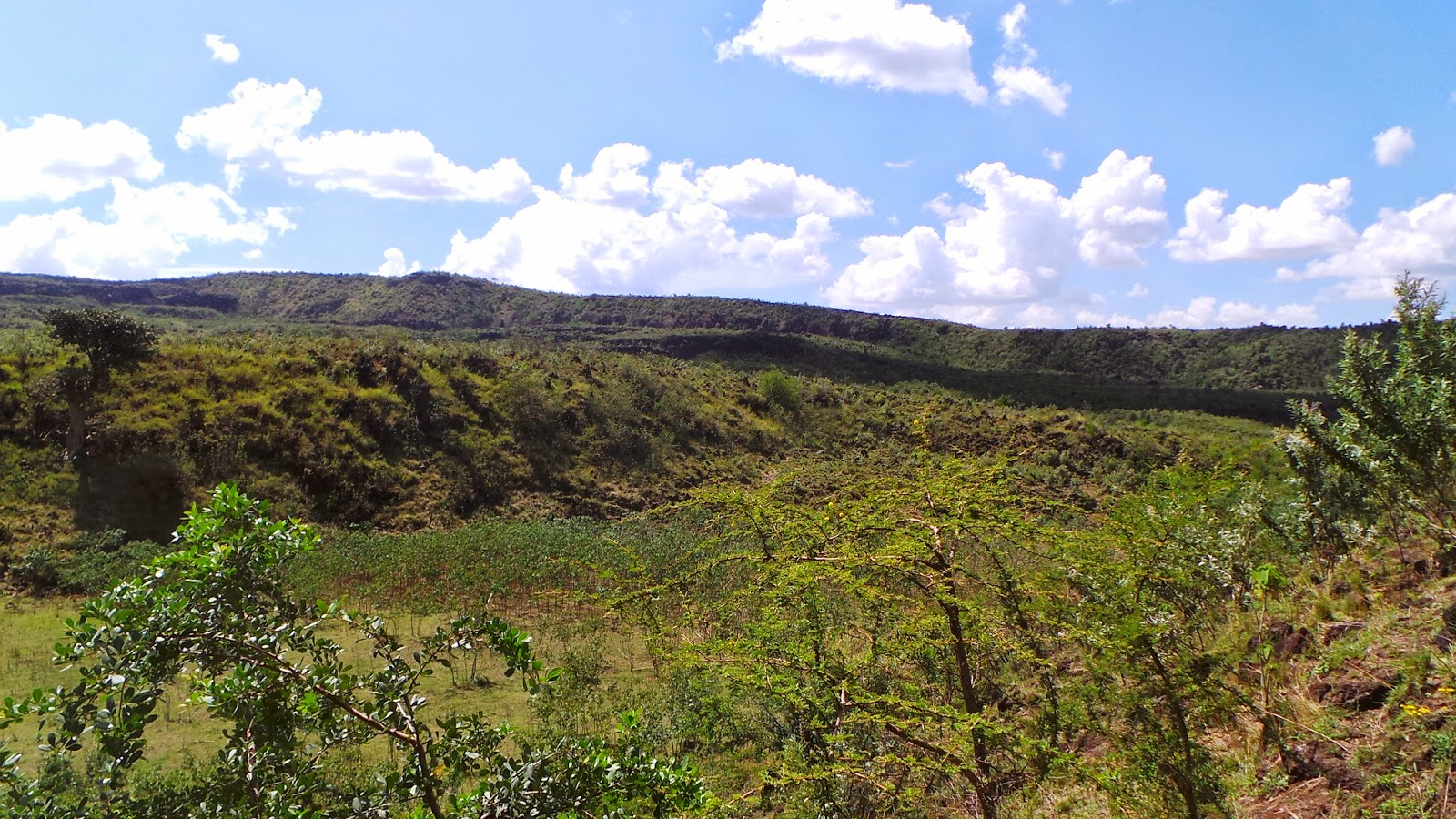Jenny, Lucy our guide and me
From our accommodation we had noticed a very straight structure we wanted to check out. We also wanted to try and establish how many flows there are in this locality.
So a later start to the day, leaving at 1030am, it took close to 3 hours just to get to the base of the lava target lava flows. This was after walking through the south east baboon troop, who were too busy playing and squabbling to notice us; watching the not so shy rock hyrax chilling in the shade; dodging a 100 strong heard of cows using the same narrow path as us, scrambling up and down steep sided flows and topography through snake and hyena country.
A rare occasion of catching a rock hyrax prepared to sit still long enough for a picture
No snakes today, just the skin of a spitting cobra. The heat in the caldera today was the highest yet, with no breeze. We decided to work fast as thunderstorms were also forecast. We collected samples and spent quite sometime discussing the different flows, where they started, where they ended and how many there are in this part of the caldera. The region is dominated by the young lavas that I have been referring too as 'scoria like', underlain by flows that seem quite broken up. From above the flows it appears that the youngest flow has bulldozed in to the flow immediately below, forming huge 'ripples'. This suggests that the lower of the two flows was not yet likely to have completely cooled.
There are three flows in this picture. Can you spot them? The furthest flow is where the we got too. It is much further than it looks, as there is no 'as the crow flies' distance in geology mapping. There is always a steep drop off, river, animal home, to try and avoid.
Avoiding the 100 strong herd. This path looks pretty narrow. And it was. But it was the widest.
Climbing back up to the shoulder of the caldera shoulder, we were able to record some data relating to fracturing, some areas locally had columnar characteristics, but not consistent enough for columnar joints. The walk again involved dodging the cows! While working, our guide had a good old chit chat with one of the herders.
Collecting data.
When we arrived here two weeks ago, we made some enquiries with the staff at our accommodation regarding wildlife we mat need to be wary or aware of. I had read in a planning report that evidence of leopards had been found in the caldera. So I asked. The reply was a resounding no. How wrong could they be.
Apparently the herders had been watching us from afar, thinking we were a bit crazy. Lucy's conversation revealed that not only were there leopards in the caldera, but they had seen one just this morning in the exact spot we had been sampling from! No leopards in the caldera indeed! I don't think we would have ventured so far away from the path if we had known. And the rock pythons are big enough to eat a calf!
The day was a shorter than normal a day at almost seven hours, most of which was spent clambering, topped off with a dip in the pool. Well Jenny did, dipped toes was enough for me.
Tomorrow is another mapping day, concentrating on the western area of the caldera.
Lala Salama from Kenya





No comments:
Post a Comment